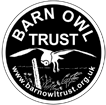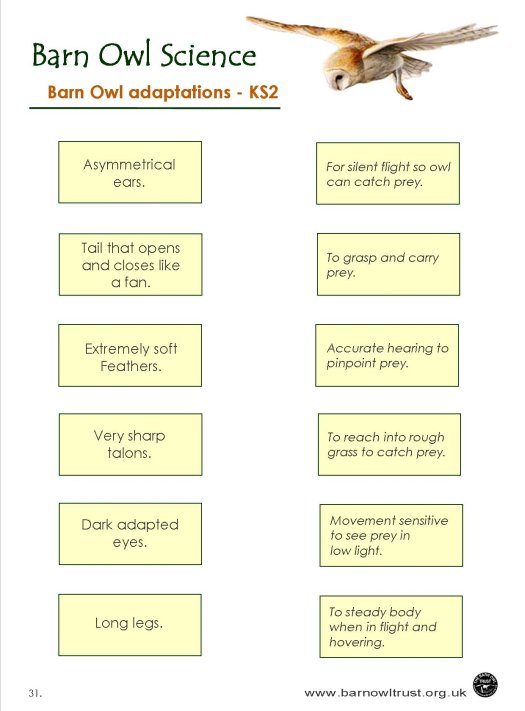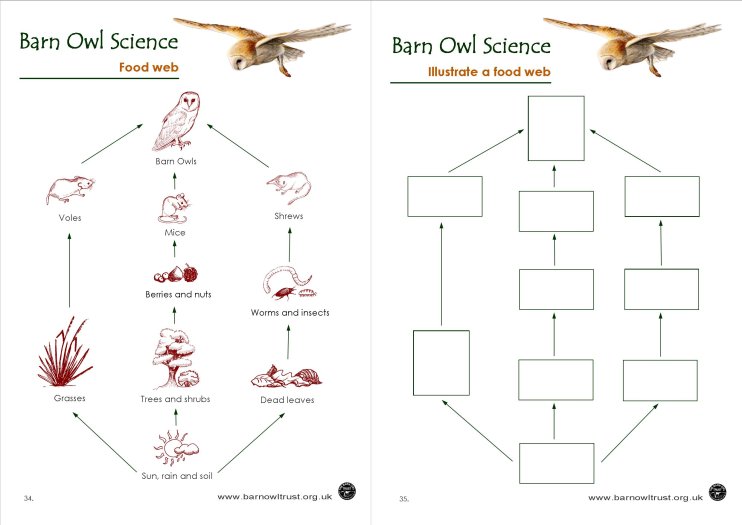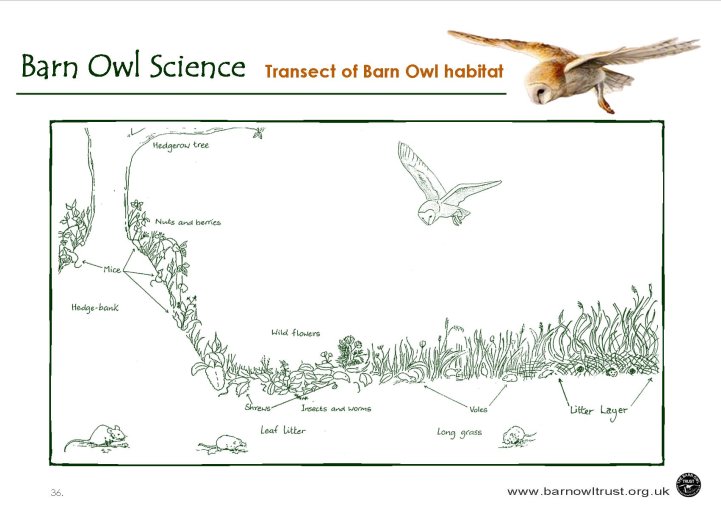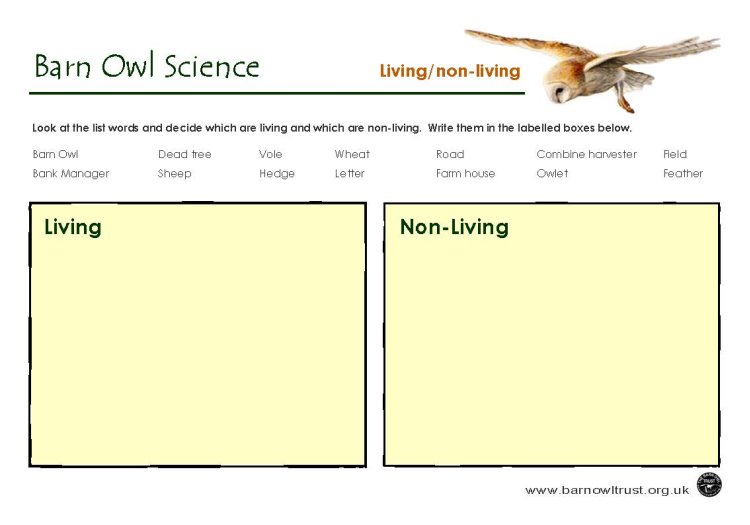Barn Owl conservation: Science educational resources
Lesson plan ideas and free* science worksheets to download!
*These educational materials may be photocopied for personal or educational use in schools on the understanding that they are copyright of the Barn Owl Trust.
Science education resources suitable for primary age children – KS1 & KS2.
We also offer free educational resources for numeracy and literacy.
- Amazing Barn Owl adaptations!
- Check your Barn Owl adaptation knowledge!
- Draw a food chain!
- Carry out a field study!
- Is it living?
- Owl pellet investigation!
- Create your own wildlife zone!
Amazing Barn Owl adaptations!
What do Barn Owls have that make them well adapted to living in open farmland? What adaptations help them to hunt? Why would their adaptations not be suitable for other habitats e.g. antarctic, rainforest. Compare a Barn Owl to birds from different habitats. How are they adapted to survive? Why not expand this to look at mammals, reptiles, amphibians and fish and look at how we classify animals?
Check your Barn Owl adaption knowledge!
Use our mix and match work-sheets to see if you know why each adaptation is important. Why do Barn Owls have soft feathers? Why do they need such long legs and sharp talons? Use our adaptations sheet above to think of some more adaptations and see if you can work out why they are important as well. Our 2 mix and match sheets have similar adaptations but are designed for different abilities – KS1 and KS2.
Download the KS1 adaptation mix and match worksheet.
Download the KS2 adaptation mix and match worksheet.
Draw a Barn Owl food chain!
Think about how Barn Owls fit into a simple food chain. What do Barn Owls eat? What do those animals eat? Does anything eat Barn Owls? What other animals benefit from good Barn Owl habitat? Expand your food chain into a Barn Owl food web and think about other native wildlife in the UK. Use our ready-drawn food web diagram to get you started.
Download the Barn Owl food web worksheet.
Carry out a field study!
Go to the school field, local woods or common land, or ask a local farmer if you can use his field. Mark out a square of land using tent pegs and string. Write down all the different types of wildlife and vegetation you can find within the marked out square. Use field guides to find out what you have found. Does that area have high or low biodiversity? Would it make a good habitat for Barn Owls or other owls? Compare with our transect drawing of good Barn Owl habitat.
Download the Barn Owl habitat transect diagram worksheet.
Is it living?
A Barn Owl is a living thing but the barn it lives in isn’t. Sort the list of words into things that are alive and things that aren’t. Use our website to find photos of these things to help you decide. How do you know the ones in the living box are alive? Compare all the living things. Are they all the same size? Do they live in the same place? What do they all eat? Can you think of other things that are alive that you see everyday?
Download the Living or non-living worksheet.
Owl pellet investigation!
An exciting practical project to do in the classroom or at home! What is a Barn Owl pellet made from? How is it formed? Once you have broken apart your owl pellet, carefully take out the individual bones. Can you tell what animal they came from? Use our owl pellet analysis work-sheet to help you find out.
There is lots more information about owl pellets on our Barn Owl pellets page or buy a Barn Owl pellet dissection pack from our online shop for everything you need to get investigating!
Download the Barn Owl pellet analysis worksheet.
Create your own wildlife zone!
Dedicate an area of school grounds to wildlife by growing a new hedgerow. Or why not create a patch of rough grassland?
Make it into a science project and record how quickly native plants and tree species grow such as hawthorn, wild rose, ash, birch, hazel, willow and beech. There are lots of questions which you can investigate – for example:
What do plants need in order to grow? Are the needs of wild plants different from cultivated plants? Which tree grows the quickest? Which has the thickest trunk?
Count how much wildlife you find in the area before the trees were planted and after. Monitor the area for the whole year (or more) and record the seasons, the weather and how the area changes and develops.
More information from the Woodland Trust and Wildseed.co.uk.
